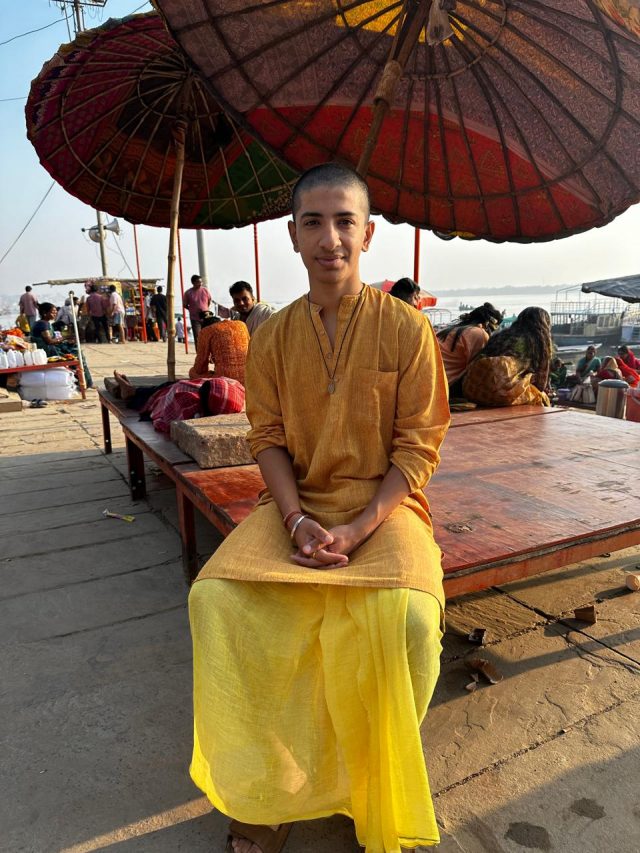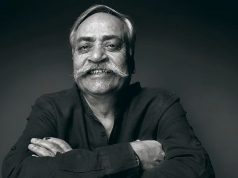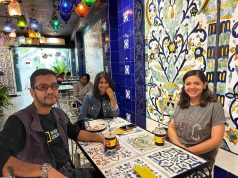By Ojasya Soham Ulfat
I am an eighteen-year-young man, shaped by the restless rhythm of Mumbai, a city of glass towers, endless traffic, and hurried ambition. Having grown up in this urban jungle and studied in an English-medium school where every goal was measured, I realised I had never truly touched the living essence of India, its wisdom, culture, and spirituality. My world was modern and comfortable, but somewhere it lacked meaning and connection.
After finishing class twelve, I decided to take a gap year, not for rest, but for rediscovery. My father, my constant guide and companion, encouraged me to travel beyond the concrete landscape and experience the India that breathes through its villages, rivers, and rituals. He wanted me to see an India that still listens to the sound of its ancient soul.
Recently, I had the privilege of meeting my father’s friend, Ashutosh Rana, a respected Indian actor and thinker. He inspired me to reconnect with my roots, to study Hindi, to listen, to observe, and to understand the cultural rhythm beneath our modern distractions. Soon after came another turning point, my Upanayanam or Janeu ceremony. In this sacred ritual, the shaving of one’s head symbolises rebirth into a more conscious life and the beginning of spiritual learning.
Soon after, my father and I travelled to Varanasi and Ayodhya, cities that have carried India’s spiritual breath for centuries. I had seen pictures of crowded ghats and glowing lamps, but I knew no image could capture their essence. Varanasi, the eternal city of Shiva, holds stories older than time itself.
The journey took eighteen long hours, noisy, crowded, and chaotic, perhaps a fitting initiation. My seat was apart from my father’s, surrounded by a Kolkata family, each watching videos at full volume. When I politely asked one woman to lower hers, she increased it! At first it felt absurd, then frustrating. Yet, in hindsight, it was India itself, noisy, unpredictable, overflowing with life. We must learn to respect each other’s sacred space.
When we finally reached Varanasi at night, my father’s student Rajiv Katpaliya had kindly arranged a room near Assi Ghat. The half-hour auto ride from the station felt like entering another dimension. The sound of devotional songs filled the air; the smell of incense mingled with the river’s breeze; cows crossed the streets with serene authority. Amid the honking rickshaws and shouting vendors, there was an inexplicable calm, as if beneath the city’s chaos flowed a quiet current of grace. Even at midnight, Varanasi was alive, a divine theatre where life and death performed side by side. The Ganga shimmered with reflected lights, and something within me began to listen inwardly.
Our days soon found a rhythm. We attended the silent Ganga Aarti at Assi Ghat each morning, a ritual that became my anchor. The synchronised chants, the flames of the lamps, and the rhythm of the drums felt like the heartbeat of the cosmos. We visited the Kashi Vishwanath Temple, Kabir Math, Harishchandra Ghat, and the Krishnamurti Foundation at Rajghat across the river. Every corner revealed a new texture, every face, a reflection of timeless endurance.
I began to feel that our idea of development needs reimagining. The government should move toward holistic growth, not just creating smart cities, but nurturing artistic, cultural, and green towns, guided by sustainable technology and rooted in India’s true spirit.
Gradually, I understood that Varanasi, the spiritual capital, is not chaotic; it is profoundly alive. It demands patience, and only then reveals its heart. It is not a city that has temples, it is a temple, a living organism where streets, shrines, and souls merge into one continuum.
At first glance, it feels hard and noisy, but once you peel away its layers, it’s like opening a coconut, rough outside, sweet within. By the end of the week, something in me had shifted.
On our final morning, after watching the sunrise Aarti, a man approached me and asked, “Pandit ji, where can I take Ganga Ma’s blessing?” For a moment I was speechless. Perhaps it was my shaved head, my dhoti, or simply the reflection of the place through me. His question startled me, not for what he asked, but for what it revealed: that somewhere along this journey, Varanasi had begun to live through me. I realised a pandit is not one who holds knowledge, but one who seeks truth.
Varanasi is not just a city of temples and rituals, it is a teacher. It strips away pretence and shows you what truly matters. Once called Anand Van, the Forest of Bliss, it teaches that bliss is not joy or sorrow, but a stillness beyond both.
After a week in Varanasi and two days in Ayodhya, I returned to my home in Dehradun with more questions than answers. But these were not questions of confusion; they were invitations to journey deeper.
Varanasi, I realised, is not a place you visit.
It is a place that visits you, and once it does, it never leaves.
Next on my path are Haridwar, Rishikesh, and Devprayag, before I move upward into the Himalayas.
— Ojasya Soham Ulfat is a traveller, seeker, and student on a gap year, exploring India’s cultural, philosophical, and artistic traditions.








